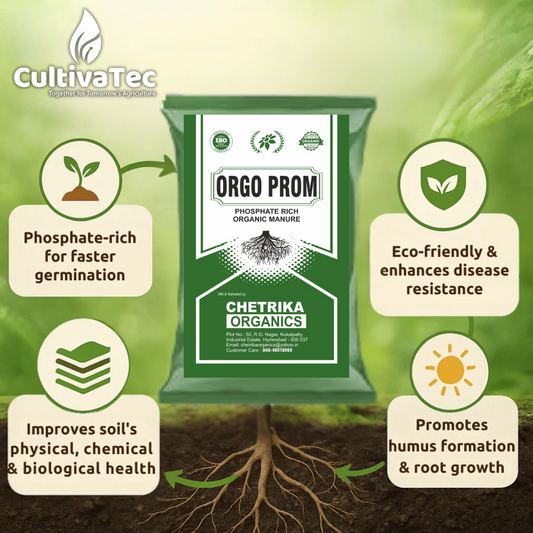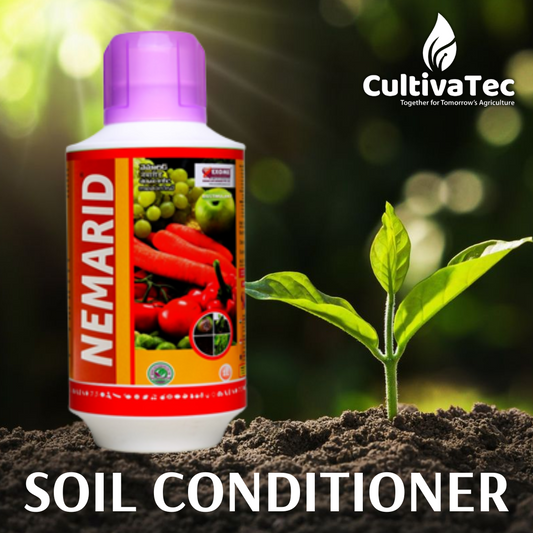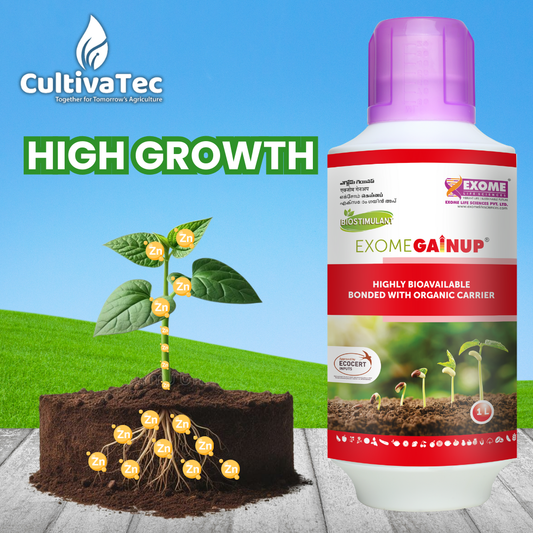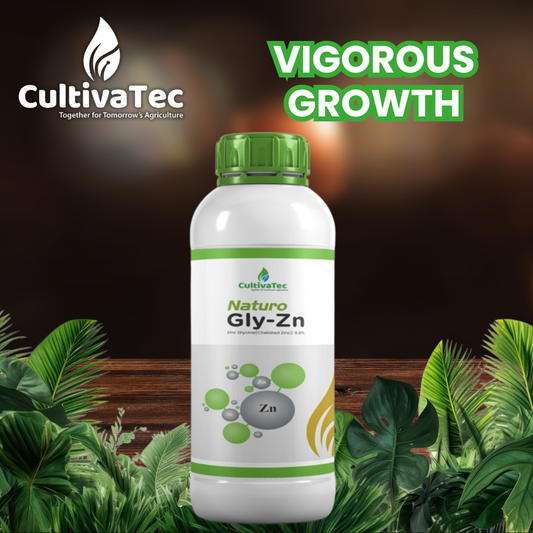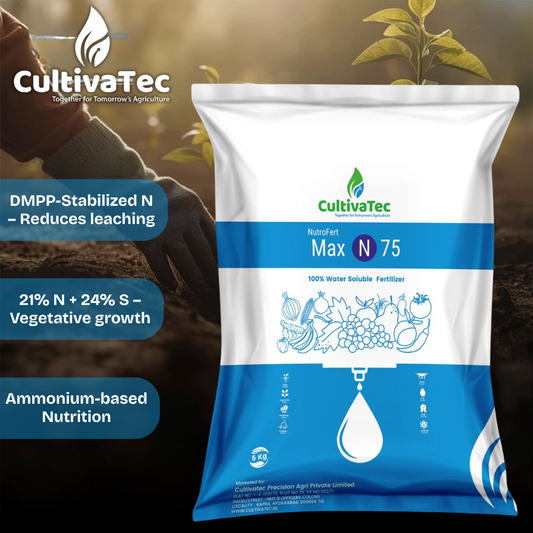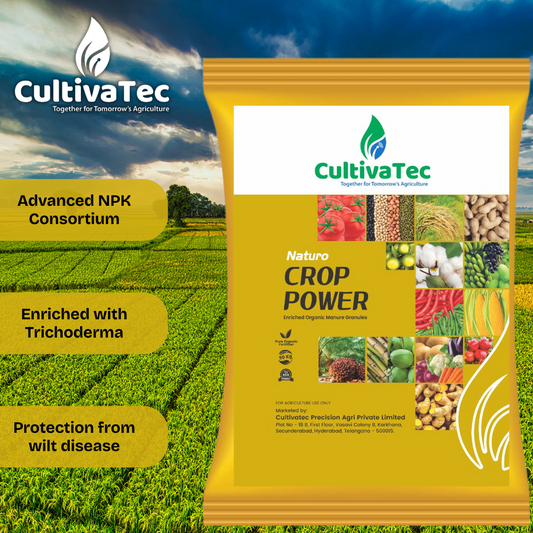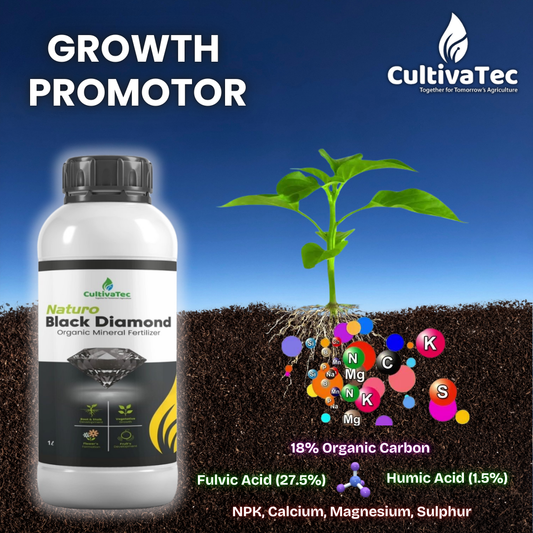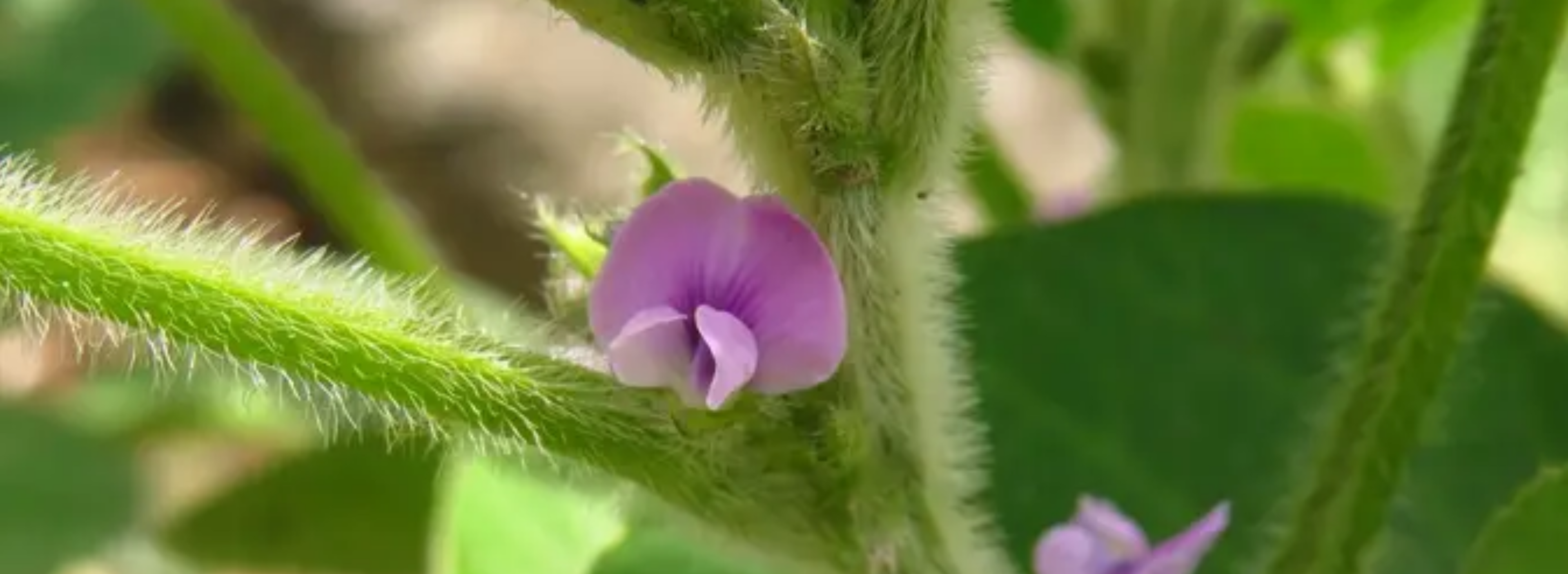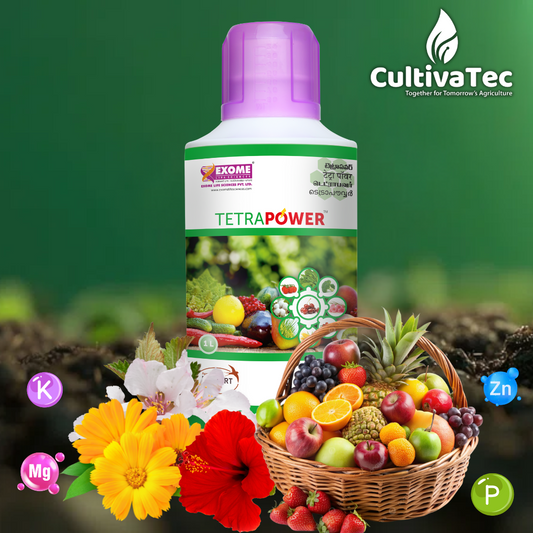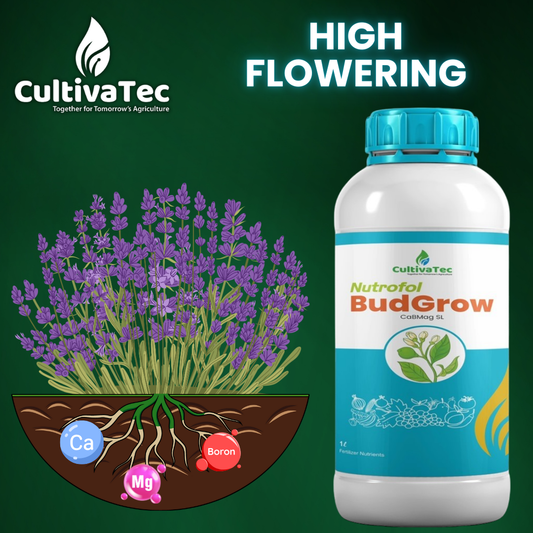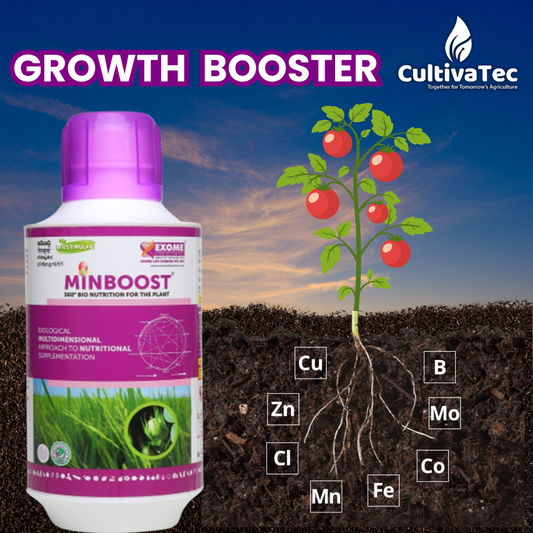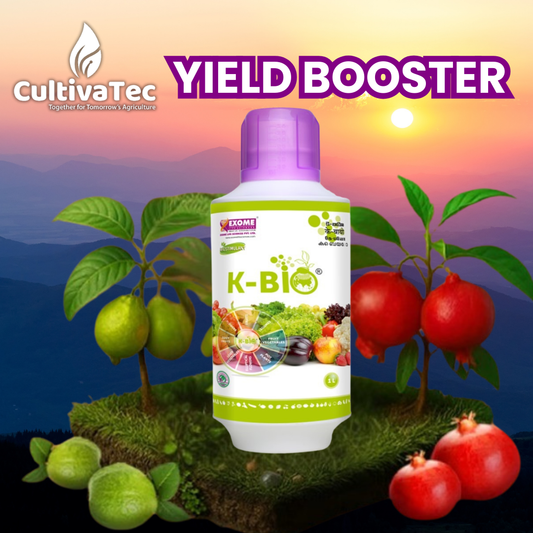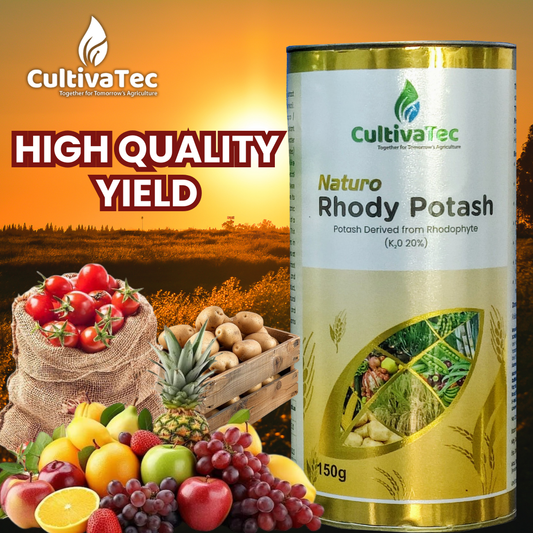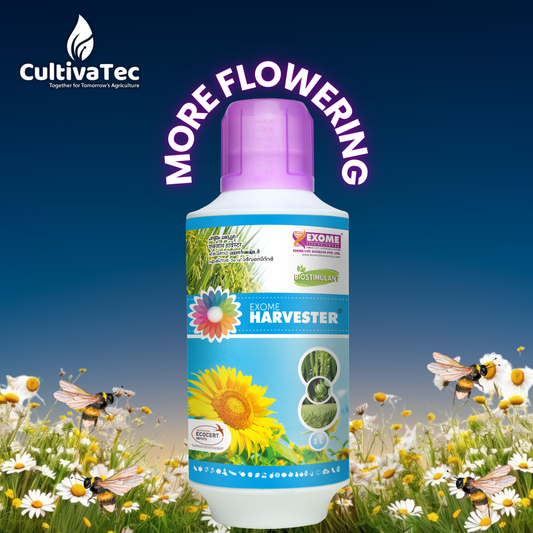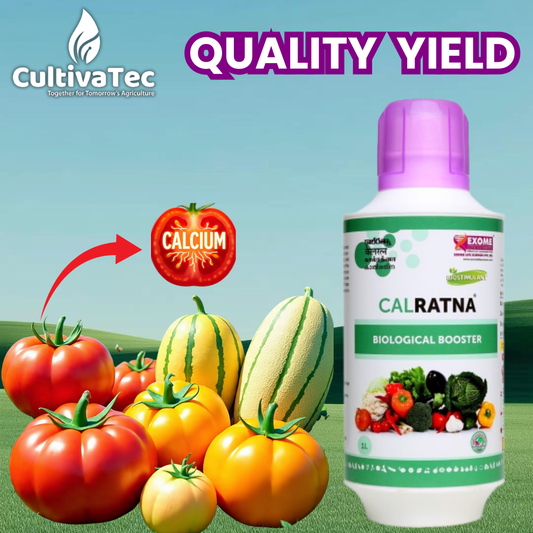cultivatec smart practice
Cultivatec
Expected fertilizer and Agrochemical Expenditure
Rupee 23,000
Expected Harvest
15 quintal/acre
Expected Income [Rs]
Rupee 75,000
standard practice
Standard farming
Expected fertilizer and Agrochemical Expenditure
Rupee 26,000
Expected Harvest
12 quintal/acre
Expected Income [Rs]
Rupee 60,000
Stage 1: Seedling Establishment (0–15 DAS)
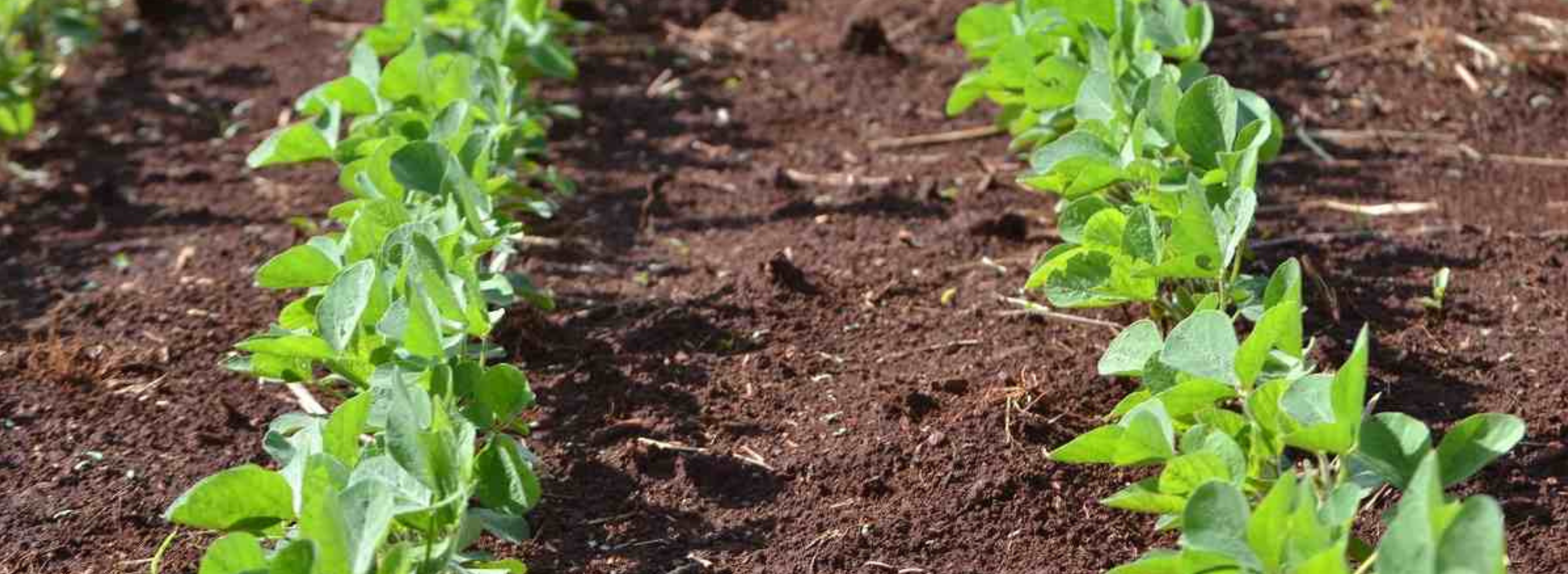
The seedling stage is dominated by germination and early root establishment, which set the foundation for the crop’s growth. The first trifoliate leaves emerge, primary roots elongate rapidly, and seedlings display uniform vigor.
Moisture stress within the first 10 days can cause up to 50% yield loss, as uneven emergence and seedling mortality drastically reduce plant population. Ideal soil temperatures are 25–30 °C, while soil moisture must be well-maintained to prevent damping-off or uneven emergence.
Nutrient support should focus on phosphorus for early root growth, sulfur for initial vegetative development, and zinc correction if deficiency is observed. Soil conditioners and organic matter enhance early fertility and water retention.
Uniform sprouting with robust primary roots and healthy seedlings.
Stage 2: Vegetative Growth (15-35 DAS)
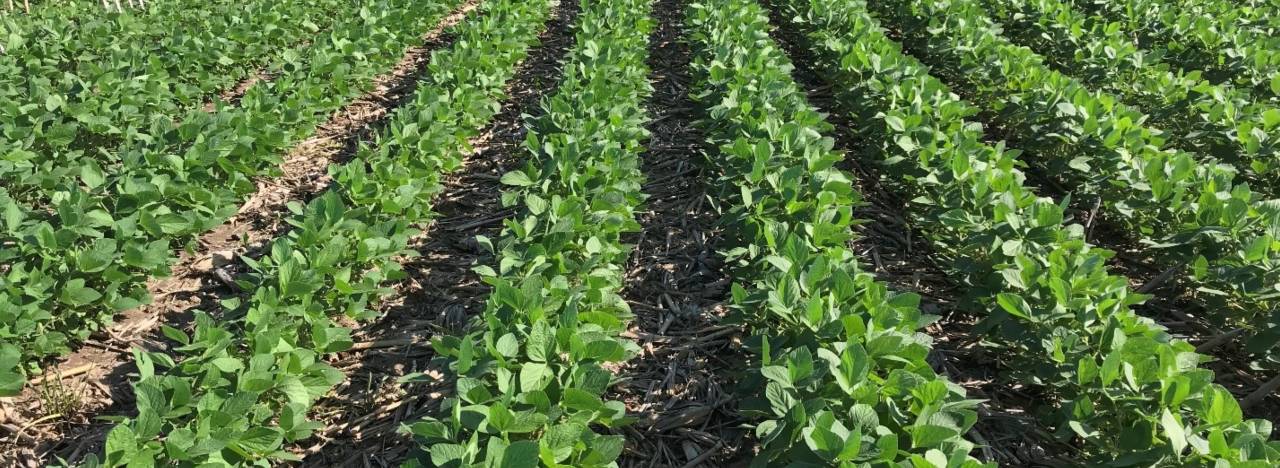
During the vegetative stage, the main stem elongates, true leaves expand, and side branches start forming, establishing the canopy that will support flowering later. Roots grow deeper and spread wider, increasing nutrient and water uptake.
Ideal temperatures range from 25–35 °C; growth slows below 15 °C, while heat stress above 38–40 °C can reduce leaf expansion, especially under low moisture. Water requirements increase from about 2 mm/day to 5 mm/day as the canopy develops.
Nutrient support should focus on nitrogen for leaf and stem growth, phosphorus for strong root development, potassium for overall vigor, and early zinc correction if needed. Incorporating organic matter, compost, and soil conditioners ensures long-term soil health and supports robust vegetative growth.
Well-developed trifoliate leaves:
Stage 3: Flowering (35-50 DAS)
During the flowering initiation stage, the crop shifts from vegetative growth to forming flower buds, which determine potential pod set and yield. Flower buds become visible, side branches support early blooms, and the root system continues to expand for nutrient uptake.
Optimal temperatures are 25–35 °C; Moisture stress at this stage is highly damaging, often causing severe flower drop and up to 20% yield loss.
Nutrient support focuses on phosphorus for energy transfer, potassium for flower development and retention, boron for pollination, and magnesium and calcium for flower health and structural support. Maintaining soil moisture and balanced nutrition is critical to minimize flower drop and ensure uniform bud formation.
Uniform bud formation
Stage 4: Pod Development (50–80 DAS)
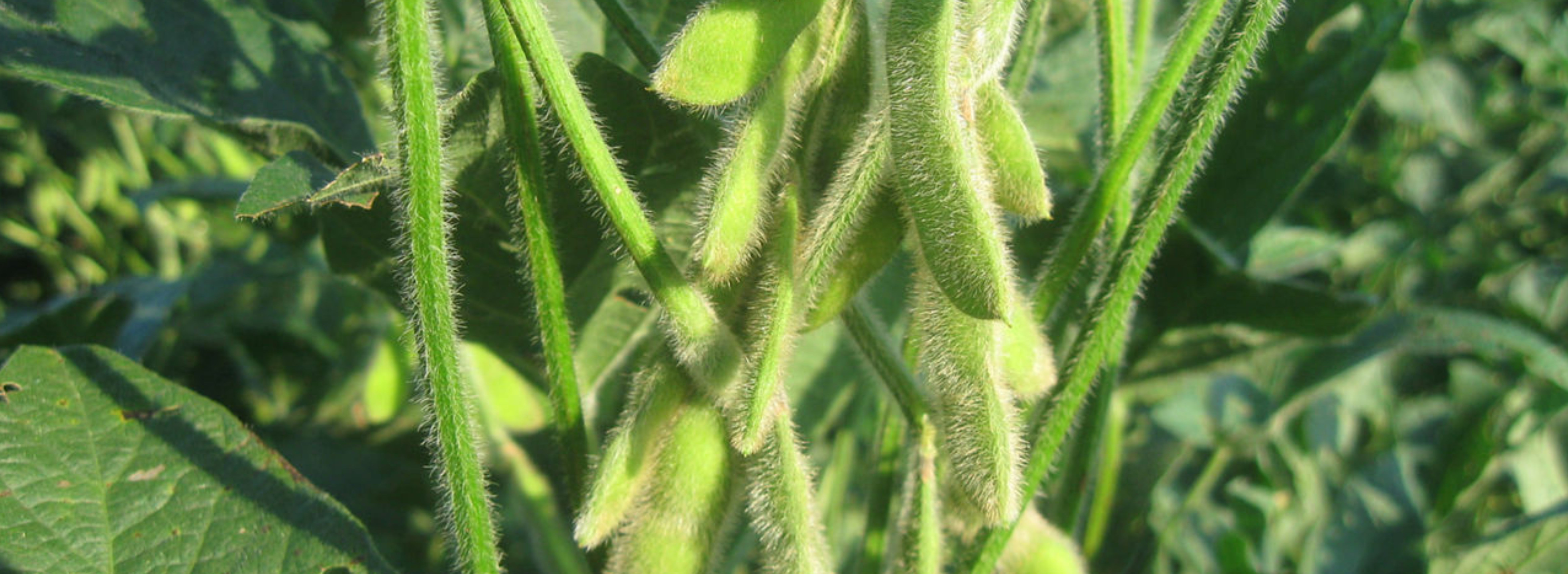
During the pod development and grain filling stage, assimilates are actively translocated from leaves to developing pods, which determine seed size, quality, and overall yield. Pods become fully visible, seeds start filling, and photosynthetically active leaves sustain this process.
Ideal temperatures remain around 25–35 °C, while Moisture stress here causes pod abortion, fewer seeds per pod, and smaller seed size, leading to 30–40% yield loss.
Nutrient support focuses on potassium for assimilate translocation and seed filling, sulfur for protein synthesis, boron for pod development, calcium for cell wall strength, and zinc for seed quality. Maintaining sufficient water and balanced nutrition ensures uniform and healthy seed development
Full pods & seed filling
Stage 5: Maturity - Harvest Preparation (80–110 DAS)
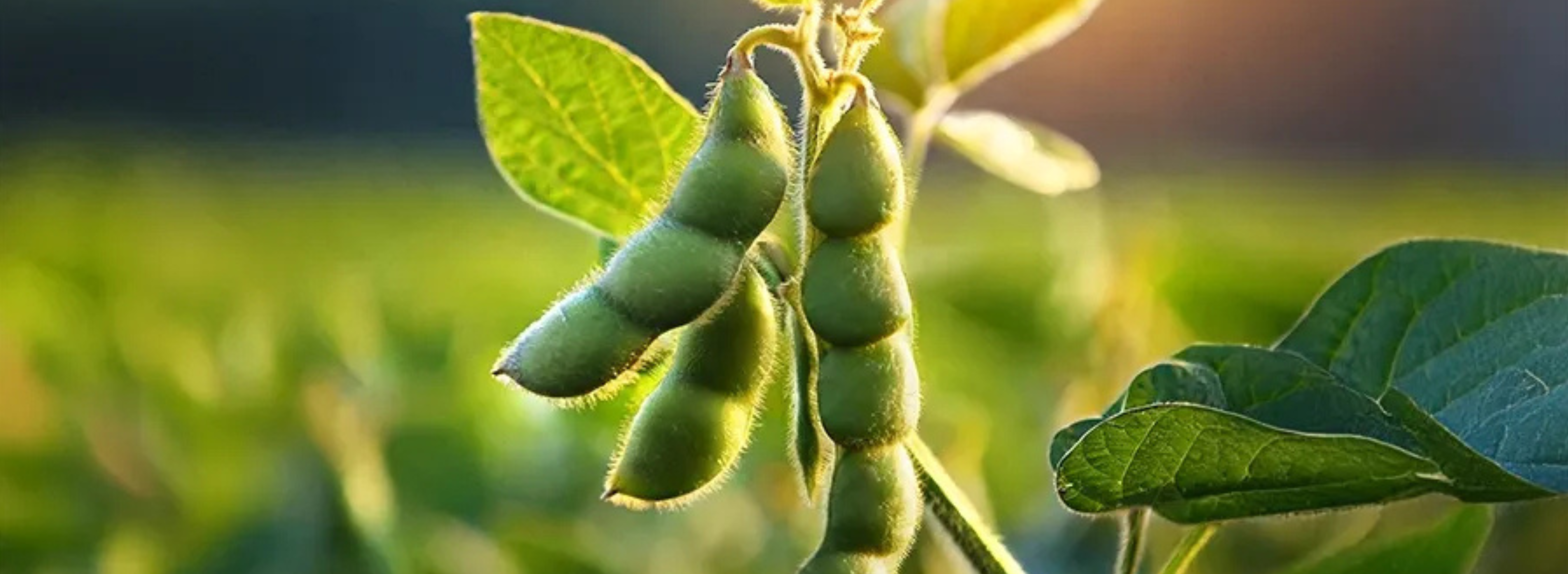
The maturity stage is dominated by seed hardening and physiological maturity, which determine final seed quality and minimize pod losses at harvest. Leaves begin yellowing, pods harden, and vegetative growth ceases.
Ideal temperatures are 25–35 °C, while late-stage water stress can reduce seed size and increase pod shattering.
Nutrient support focuses on potassium to maintain late-stage photosynthesis and stress tolerance, boron for final seed set, and calcium for pod wall strength. Balanced nutrition and careful moisture management ensure uniform seed maturation and reduced losses.




